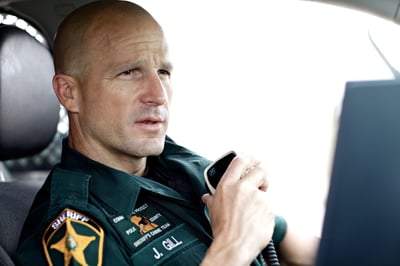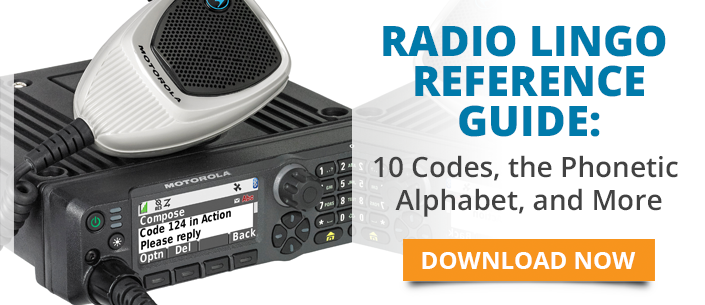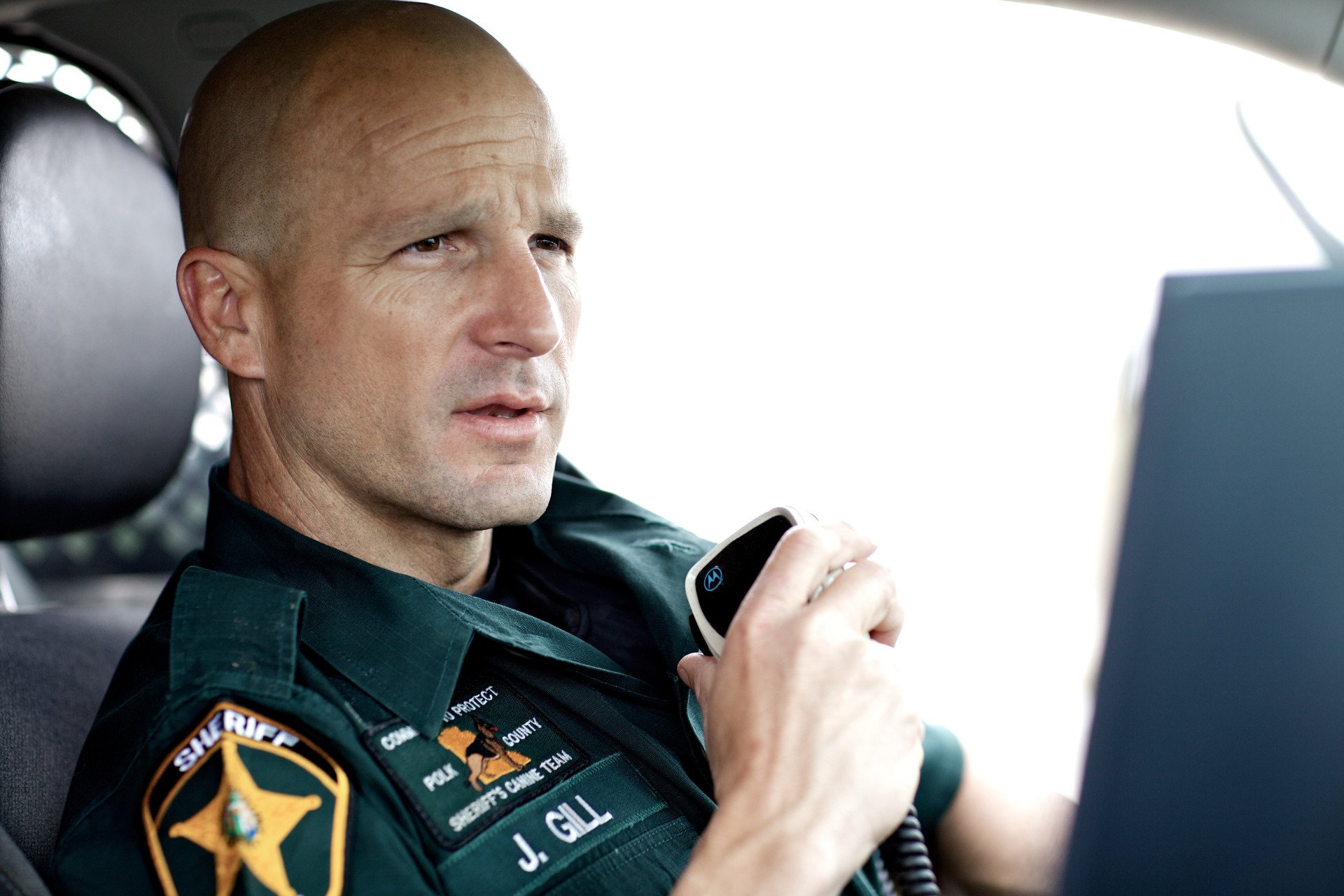 Have you ever been communicating over two-way digital radio and heard radio lingo that had you scratching your head? Say you finished saying something important and the person you were speaking to responded "10-4," or "Roger that." Maybe they even replied with a "Sure, what's your 20?" when you talked about meeting up. These phrases are examples of short-hand radio lingo that's been in place for decades, all designed to create succinct and crystal clear communications for radio users. Unfortunately, things aren't that clear when you aren't familiar with the terminology. To help you understand some of the most popular radio lingo used today, we broke it down here. Over.
Have you ever been communicating over two-way digital radio and heard radio lingo that had you scratching your head? Say you finished saying something important and the person you were speaking to responded "10-4," or "Roger that." Maybe they even replied with a "Sure, what's your 20?" when you talked about meeting up. These phrases are examples of short-hand radio lingo that's been in place for decades, all designed to create succinct and crystal clear communications for radio users. Unfortunately, things aren't that clear when you aren't familiar with the terminology. To help you understand some of the most popular radio lingo used today, we broke it down here. Over.
"Roger That," "Mayday" & More
There are certain radio terms that are likely already familiar to radio and non-radio users alike because of their prevalence in popular culture, from police radio codes on TV to CB radio lingo in songs and movies.
Here are some of the terms that will most likely ring a bell even if you're brand new to radio communications.
"Roger That": A quick way to say that you understand what the other person is saying. "Roger" stems from the days of Morse code communications when the letter "R" was used to indicate "received" or "message understood." As radio communications became more popular and the technology evolved, the U.S. military adopted the term "roger" for the same reason.
"Mayday": A term that you will hopefully only ever encounter in the movies and not in real life. It essentially means "life-threatening emergency" and is recognized internationally as a universal distress signal. Most often, "mayday" is used to indicate that a vehicle or transport, such as a plane, boat, helicopter, etc., is going down. The term dates back to the early 1920s and is derived from a French word m'aidez, which means "come help me."
"Over": Used at the end of a sentence or phrase to indicate that the person is done speaking.
"Out": Indicates that the person is signing off.
"Read/Copy": Both words are used to ask if the speaker is being heard or understood, for instance, "Do you read me?" or "Do you copy?" Think of it as the digital radio version of "Can you hear me now?"
"Wilco": Literally means "will comply" and indicates that the speaker is intending to complete the task that's been asked of them.
CB Radio Lingo
CB radio lingo is still used by truckers today and continues to evolve. Here are some of the most common rated PG examples of CB radio lingo (remember that we said it was colorful).
Advertising: a marked police car with its lights flashing
Bear/Smokey: police officer; refers to the fact that the Smokey Bear character created by the Ad Council wears a hat similar to those of many highway patrol officers.
Camera: police radar unit
City Kitty: local police officer
County Mounty: county sheriff or deputy
Evel Knievel: police officer on a motorcycle; named for the motorcycle stuntman.
Big D: Dallas
Derby City: Louisville, Kentucky
Mardi Gras: New Orleans
Mickey Mouse: Orlando, Florida
Windy City: Chicago
Alligator/Gator: large piece of blown-out tire on the road
Go-go Juice: gasoline or diesel fuel
Nap Trap: hotel or rest stop
Bulldog: Mack road tractor
Four-wheeler: any vehicle with only 2 axles; anything that isn’t an 18-wheeler/semi truck
Kiddie car: School bus
Pete/Peter Car: Peterbilt truck
Salt Shaker: snow plow
The 10-Codes
10-codes provide a succinct way of communicating via radio that spans users and industries. You're just as likely to hear a 10-code working in the public safety arena as you are in a manufacturing company.
In short, 10-codes (or 10-signals) are numbers that stand in for phrases. Here are some of the most popular 10-codes and what they mean:
10-1: Bad reception
10-4: "OK" or "Affirmative," similar to "roger"
10-9: "Say again", or "repeat, please"
10-20: Location, as in "What's your 20?"
10-36: Current time, "Can I get a 10-36?"
10-69: "Message received," again, much like "roger"
10-77: Estimated time of arrival, "Alpha 10-77"
Just like "roger" and "mayday," 10-codes date back to the first half of the 1900s. Charles "Charlie" Hopper (District 10), then communications director for the Illinois State Police, is credited with inventing the codes in the 1930s.
At the time, limitations in radio technology meant that there was a brief delay between the time an officer pressed the button to talk and when the transmission of their voice would begin. Hopper understood that adding the "10" before the codes gave the radios time to catch up, ensuring that complete and abbreviated messages got across.
Truckers also have their own versions of 10 codes, some of which have the same meanings as law enforcement and others all their own. “10-4,” for example, tends to universally mean “I understand.”
Some argue that ten codes are a thing of the past because of inconsistencies in what the codes mean in different departments, geographies and industries. To be sure, lack of consistency has had a disastrous impact on communication and coordination across first responders and law enforcement during natural disasters such as Hurricane Katrina.
Officials, particularly those with the Federal Emergency Management Agency (FEMA), have been urging departments to adopt "Plain Talk" during their radio communications instead of lingo. Clear, descriptive language is replacing the codes in federal communications, and while it may take longer to get messages across, advocates of Plain Talk say it's worth the extra time to ensure interoperability and to make sure everyone understands each other.
The subject isn't yet settled, and the 10-codes are still widely used in public safety, as there is even an official guide created by the Association of Public Safety Communications Officials (APCO).
The Phonetic Alphabet
Have you ever had trouble determining what letter someone said? After all, many letters sound the same when spoken. It's easy to confuse "M" with "N" or "B" with "D," especially when you're communicating over an electronic device. In order to solve this, people communicating over radio often refer to letters via the phonetic alphabet, also known as the spelling alphabet, which is a series of words that indicate the letter.
The police phonetic alphabet is common with officers communicating a license plate number, for instance 111-ABC may be communicated as "1-1-1-Alpha-Bravo-Charlie." The international phonetic alphabet is used by sectors around the globe, including public safety, education, health care and even manufacturing, and it's also referred to as the military phonetic alphabet.
Here is the complete list of the phonetic alphabet:
Alpha, Bravo, Charlie, Delta, Echo, Foxtrot, Golf, Hotel, India, Juliet, Kilo, Lima, Mike, November, Oscar, Papa, Quebec, Romeo, Sierra, Tango, Uniform, Victor, Whiskey, X-ray, Yankee, Zulu
A Link to Radio's Past
In addition to its utility and convenience, two-way radio lingo also represents an enduring link to the technology's history. Radio has been a key communications tool for public safety and beyond for decades, and the relationship is far from over as more users recognize the benefits of two-way radio over cell phones and the potential that can be reached with the help of two-way radio service providers.
Every time you hear or say "10-4" or "Roger that," remember that you're part of a long tradition of radio communications.
Now that you have some of the terminology down, the next step is to ensure that you have the best communications system in place for your organization. This includes two-way radio solutions, wireless networks, and distributed antenna systems. Contact Chicago Communications today to learn more!


